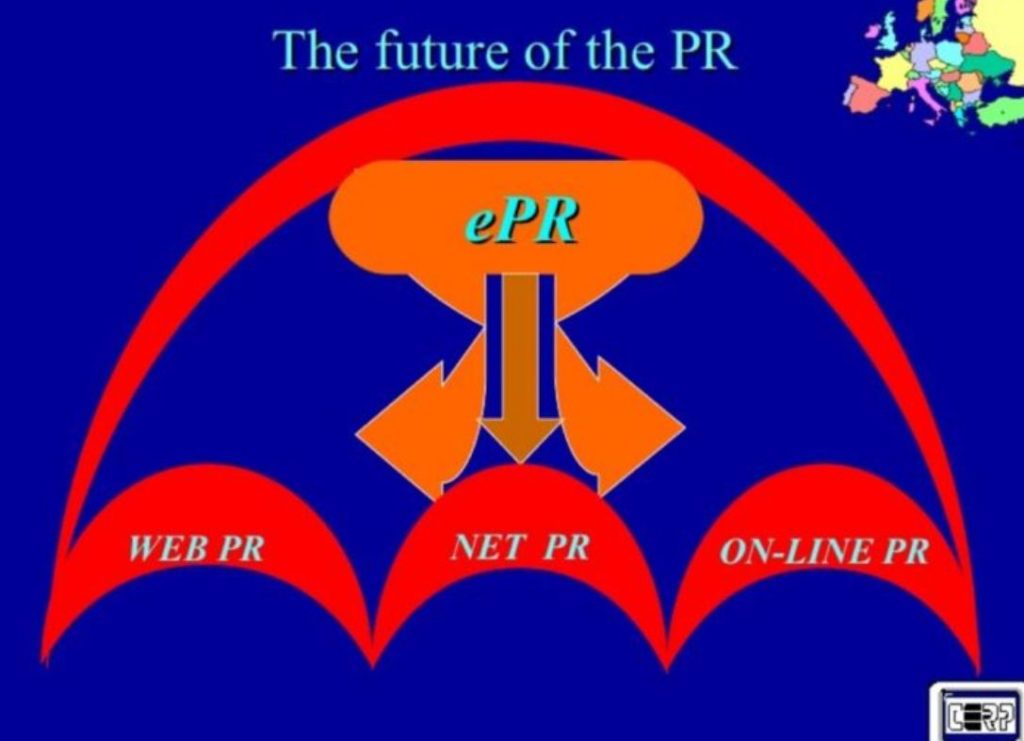
Chief Communication Officer Magazine for Communication Leaders
Public relations is the conscious organization of communication.
Public relations is a management function.
The task of public relations is: To achieve mutual understanding and to establish beneficial relationships, between the organization and its publics and environment, through two-way communication.
(CERP recomendation)
* Personal communication
* Events – group communication: Different events, presentations, exhibitions, seminars, conferences, congresses etc.
* Publications: Printed and electronically published publicity materials
* Audio-visual public relations tool
* Printed and electronic media
* Others
ePR includes all forms of communication, where the participants communicate electronically, internal (intranet) or external (Internet)
What is ePR, electronic public relations?
The role of ePR:
* Informing the public and environment
* Positioning an organisation through understanding and the persuasion of the environment and the public
* The co-ordination of behaviour. The co-ordination between the organisation and the public and the public and the organisation, through interactive dialogue.
We could speak about the ePR only if the above three criteria exist simultaneously. The new information and communication technologies have opened up totally new communication channels for pr practitioners on the field of public relations. The ePR is one of the most effective tools of direct communication, not only in business but also in wider society. ePR is a tool to reach and communicate with new and existing partners.
ePR takes the following forms:

WEB PR
Web PR = Interactive web site, homepage
From a public relations standpoint, the web provides an excellent opportunity to distribute information to the public speedily, efficiently and cost-effectively.
NET PR
Net PR includes chat rooms, e-mail (Net) Press Releases and the use of interactive Intranet.
The forms of interactive Net PR:
Net communications
* Chat rooms
* Forum – lists
* E-Newsletters
* Intranet
* Virtual organisations, Job finder etc.
* Net media services
* Net press release (video-, audio- or audio-visual presentations. b-rolls, video-press release films etc.)
ON-LINE PR
The forms of the On-line PR:
* On-line media
> Off-line – on-line media: On-line edition of magazines, newspapers, radio- TV stations
> On-line – on-line media: Electronic magazines, radio – TV stations
> Portal sites: Access to more than one off-line and on-line sites
> On-line press room: Media only section of the web site or dedicated site.
* On line conferences
>On-line voice and/or video conferencing
>On-line database
>On-line libraries
* E-education (distance learning ->On-line education real time, or on demand)
The intranet can be one of the most effective tools of Internal PR
>> Informing employees
>> Shareholder (Ownership) relations
Interactive communication interdepartmental, inter-site, global
>> The interactive web, net and on line PR is effective external tool
>> Consumer relations – product-, services-, activity PR
>> Financial relations
>> Professional relations
>> Industrial relations
>> Public Affairs – Community-, Minority Relations, Government Affairs
>> Issue Management
>> Media relations
>> Organisation Aid-, fund raising- policy, philanthropy
The ePR also effective in every day public relations work
What is the future of public relations?
Access to information is now demanded as a right: The days of limited access and push communication are over. In every field of public the pr experts collect and send information they want to be available, simultaneously with the birth of information. The challenge for further relations’ pr practitioners is to use the new Information communication technology tools to satisfy the demand.
The CERP ePR paper adopted by CERP’s General Assembly Meeting in Berlin 14th October 2001.
The author of this recommendation: Thomas Barat
Source: CERP recommendations